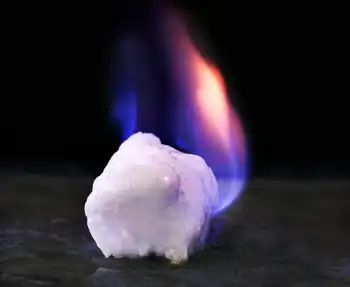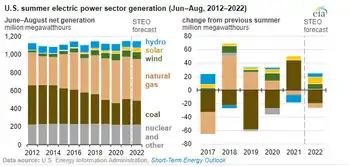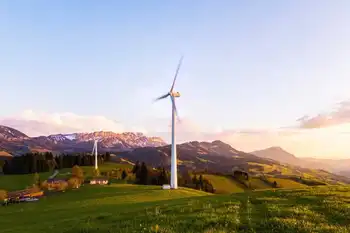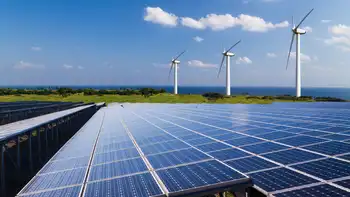Con Ed says July Blackout was Beyond its Control
Defending itself against critics who have faulted the maintenance and age of its infrastructure, Con Edison said that it still had the most reliable electrical system in the country. And it said that the Long Island City network — the one that partly failed in Queens — was in the top quarter of its 57 underground networks in terms of reliability.
The utility did, however, say it would add 250 telephone lines to handle customer calls, install a better system to track power failures and study the use of electric meters that can alert the company when a customer is without service.
By any measure, the company’s report, the result of a two-month internal investigation, was a sweeping defense of its handling of the blackout and its decision not to shut down the entire network, a move that would have affected more people but might have allowed a faster recovery. It did little to mollify Queens politicians who were enraged by what they saw as sluggish, blundering and even reckless conduct by the utility, which did not correctly estimate the number of people affected by the blackout — estimated to be around 100,000 — until the fourth day. Earlier, the utility had put the number at about 6,400.
“We understand the frustrations that our customers had,” Kevin M. Burke, the chairman and chief executive of Con Edison, said in a news conference at its headquarters near Union Square. “Our employees were equally frustrated. We know that the trust that we had with our customers was shaken, and the steps that we’re taking and we’re announcing today are going to rebuild that trust.”
Soon after, three Queens officials who have been harshly critical of the utility — Assemblyman Michael N. Gianaris and Councilmen Eric N. Gioia and Peter F. Vallone Jr., all Democrats — held their own news conference. They said the report focused on technical issues without examining whether the utility’s resources and management were adequate.
“This report is a lot of pages, but not a lot of answers,” Mr. Gioia said. “It seems to be a corporate smokescreen, crafted by lawyers to avoid responsibility and confuse readers.”
Mr. Vallone said the report represented an evasion of accountability. “This report blames the cables underground, but doesn’t blame those responsible for making sure that the cables run,” Mr. Vallone said. Representative Joseph Crowley, another Queens Democrat, said the report was “an important step for Con Ed in communicating with the public.” However, one of his recommendations — better outreach to immigrant communities — was not included in the report.
The stateÂ’s Public Service Commission, which regulates utilities, is conducting its own investigation, as are state and city lawmakers.
The report said the blackout began on July 17 after an “unprecedented set of circumstances” put enormous strain on the Long Island City network, which serves 115,000 customers. (The blackout affected 25,000 customers, which can be a household or a business, and is considered equivalent to about four people.)
The network is made up of 22 high-voltage primary feeder cables, which supply electricity to a network of transformers.
According to the report, three unrelated events on July 17 combined to knock out five feeders. The first event was a fire, around 3:50 p.m., that broke out in an underground conduit near 30th Avenue and 44th Street when a low-voltage secondary cable short-circuited. The fire damaged two of the primary feeders, causing both of them to fail in a 32-minute period. More than two hours later, at 6:48 p.m., a third feeder failed.
A circuit breaker in the substation was supposed to isolate that third feeder and take it off the network. It failed to do so, and as a result a backup breaker opened, taking down that feeder and two others.
When workers tried to restore one of the five feeders to service, an “inrush,” or a sudden surge of current, further complicated repairs. Ultimately, 13 of the 22 feeders failed at some point in the blackout, and on two occasions, 10 were out at once.
Mr. Burke said the company had invested $58 million in improvements to the Long Island City network since the blackout, replacing 57 transformers and installing 458 new sections of secondary cable and modified sensors. He also pledged to add two feeders to the network by next summer, bringing the total to 24.
Mr. Burke said the utility had also installed a computer-based system to better estimate the number of customers without power. By next summer, he said, Con Edison will have a map-based graphic tool that will display the status of secondary cables and the locations of reported failures. Also by next summer, he said, the utility will complete a review of the feasibility of buying electric meters that could alert the company when a customer is out of service.
Related News

Basin Electric and Clenera Renewable Energy Announce Power Purchase Agreement for Montana Solar Project
MONTANA - A new solar project in Montana will provide another 150 megawatts (MW) of affordable, renewable power to Basin Electric customers.
Basin Electric Power Cooperative (Basin Electric) and Clenera Renewable Energy, announced today the execution of a Power Purchase Agreement (PPA) for the Cabin Creek Solar Project. Cabin Creek is Basin Electric's second solar PPA, and the result of the cooperative's continuing goal of providing a diverse mix of cost-effective energy for its members.
When completed, Cabin Creek will consist of two, 75-MW projects in southeastern Montana, five miles west of Baker. According to Clenera, the project will eliminate 265,000 tons…





